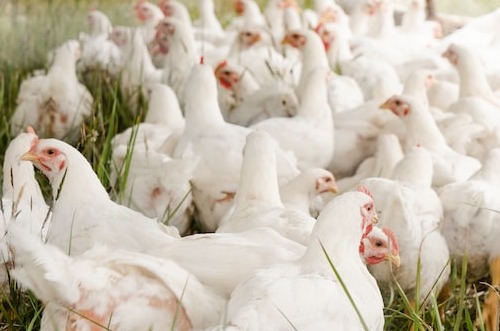W22: Chicken Update

In W22 in the chicken landscape, CEPEA indicates that Brazilian chicken prices fell sharply in the second half of May, exerting downward pressure on the average monthly value of the product compared to April due to weakened demand. From April to May, the average value of Brazilian whole frozen chicken fell 1.1% in the wholesale market of Greater São Paulo, passing to USD 1.31/kg in May. In Porto Alegre (RS), the devaluation of chicken meat was less intense, down slightly by 0.4%, with frozen whole chicken traded at an average of USD 1.84/kg. According to the Power of Meat report, 2022 US chicken had the strongest US Dollar per pound growth and came second in sales to beef. This is linked to the tightening of beef supplies over the past year, which drove beef prices on an upward trend, hence US grocery store chicken taking advantage of the situation. Furthermore, the National Chicken Council reports that 2023 US chicken consumption is on track to outperform 2022 consumption by 1.3M pounds. The National Chicken Council, in its summer 2022 report, also revealed that, despite rising prices, US chicken consumers still purchase the protein due to its nutrition, value, and versatility. Looking ahead to the spring and summer of 2023, which is a prime grilling season, Perdue forecasts an increase in sales of various cuts of fresh chicken. Given the recent reports, showing that chicken thighs make up 15% of total chicken sales, Perdue also expects greater interest in dark meat cuts in 2023. Similarly, Tyson Foods projects 2023 US chicken production to increase by approximately 3% YoY.
The average price of broiler chicken sold by Thai farmers increased from USD 1.311/kg in W20 to USD 1.313/kg in W21, up 0.15% WoW. The marginal rise in price was due to the domestic demand that correlated with the supply in the market. In W23, the Thai broiler chicken price is expected to either stabilize or decrease slightly. DALRRD assured poultry product consumers in the Western Cape of South Africa that it is safe to consume chicken meat and eggs. This follows growing concern amongst consumers that commercially produced poultry meat and eggs are not safe to eat due to the ongoing outbreak of an avian influenza strain in the province. An outbreak of high pathogenic avian influenza was confirmed on five commercial chicken farms in the Western Cape in South Africa. Egyptian poultry prices to the consumer dropped from USD 2.59/kg in early May 2023 to USD 2.27/kg on June 1st. This is linked to the increase in the supply of feed and the decline in the price of feed by more than USD 64.73/MT. Therefore, the price of a white chicken for farmland delivery ranged from USD 2.01-2.04/kg, while the price of Sasso reached USD 2.36/kg, the white chick at USD 0.26, the Sasso chick at USD 0.36, and the white mothers at USD 1.81.
Lastly, Tridge’s data analysis indicates that in May 2023, South Korean native chicken prices averaged USD 6.11/kg, up 10% MoM, an increase of 25% YoY, and a fresh eight-month high. Meanwhile, breeder chicken wholesale prices in Daegu averaged USD 4.91/kg, up 4% MoM, the sixth consecutive rise, and the highest level in at least nine months. In addition, semi-broiler prices averaged USD 3.44/kg, a decline of 4% MoM but up 20% YoY. The increase in prices is attributed to the ongoing high input prices as a result of the Korean Won depreciating against the US Dollar. The current foot-and-mouth disease (FMD) situation in South Korea might also be affecting chicken prices. Moving forward, chicken prices might be pressured upward if the FMD development worsens. Nonetheless, the 2023/24 outlook for input prices is pointing downward, which eventually will pull chicken meat prices down, but, for South Korean producers, this will also depend on the behavior of the USD/KRW exchange rate.







